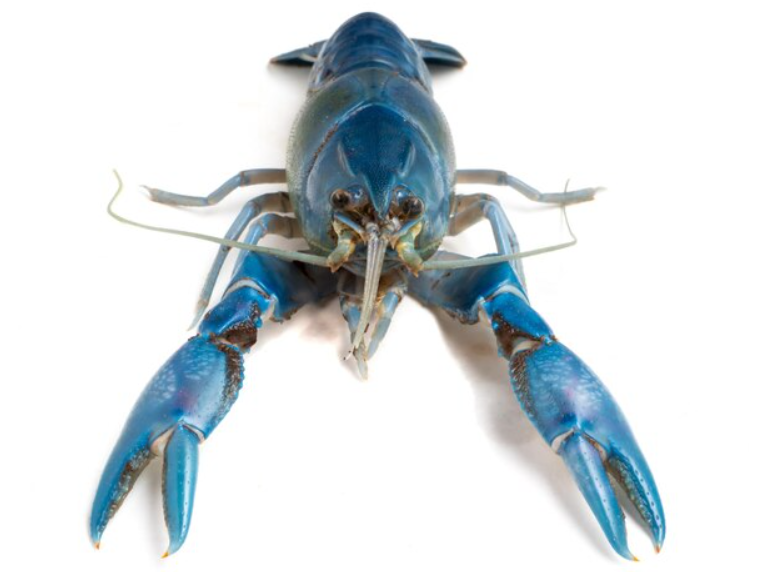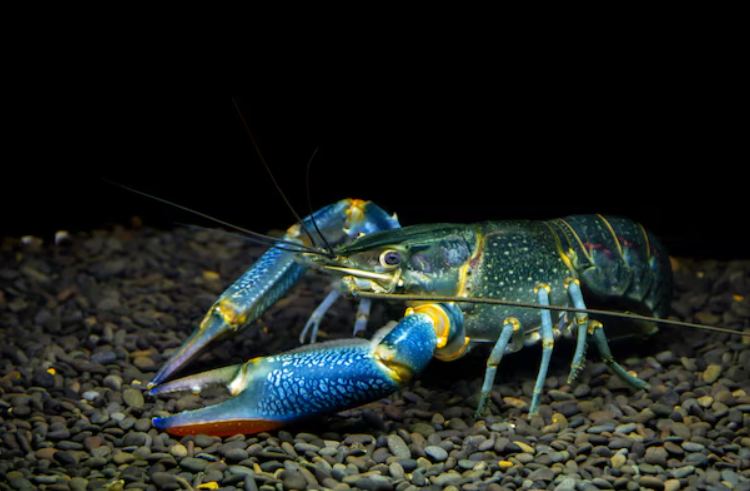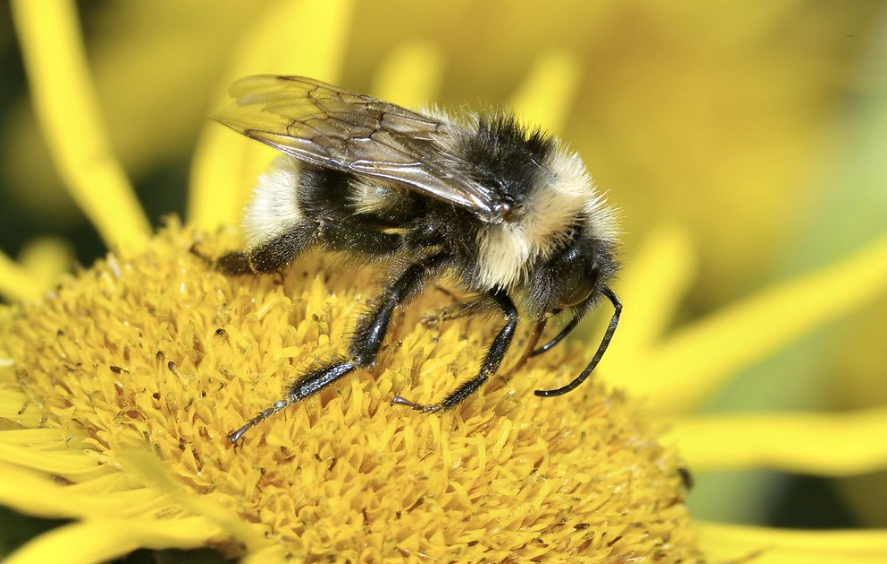
A Complete Guide to the Intriguing Freshwater Crustacean Yabby
The name “yabby” describes a kind of freshwater crayfish that is mostly found in Australia and has drawn interest due to its distinctive characteristics, ecological significance, and culinary applications. The yabby, formally known as Cherax destructor, is a common species among aquarium owners, amateur fishers, and even chefs who want to add a unique touch to their dishes. This freshwater crustacean is vital to its ecology and may be found in a variety of freshwater settings. We shall go deeply into the world of the yabby, examining its habitat, traits, food, behaviour, cultural importance in Australia, and methods of production for human use.
What is a Yabby?
Cherax destructor, the scientific name for the yabby, is a kind of freshwater crayfish that is indigenous to Australia. Its strong physique and enormous, strong claws, which it utilises to burrow and capture prey, define it. Rivers, lakes, and dams are home to yabbies, especially in Australia’s southeast. Because of their extreme adaptability, they may thrive in a variety of water types, including highland streams and lowland rivers. Because of their robust exoskeleton, remarkable claw strength, and significant contribution to freshwater ecosystems in Australia, yabbies have gained widespread recognition.
Yabbies’ Family and Variations
Yabbies are members of the Parastacidae family, which also contains other freshwater crayfish species. Although Cherax destructor is the most well-known yabby, the Cherax genus has several species, each of which has unique traits. But what really sets the yabby apart as a timeless representation of Australia’s freshwater biodiversity is its capacity to flourish in a variety of settings.
The Physical Attributes of a Yabby
The physical characteristics of the yabby set it apart from other crustaceans. Its huge, usually unevenly sized claws (chelae) are its most noticeable trait. The smaller claw, called the “picker,” is utilised for delicate motor skills like feeding, while the bigger one, called the “crusher,” is employed for defence and territorial conflicts.
The Yabby’s Exoskeleton and Adaptations
The yabby’s segmented body is protected from environmental factors and predators by a robust exoskeleton. The yabby’s hard shell, or carapace, is usually green or brown, which helps it blend in with its natural habitat. One trait that distinguishes yabbies from many other crustaceans is their capacity to regrow severed appendages. This skill is very helpful for avoiding predators and guaranteeing their survival.

Growth and Moulting in Yabbies
Moulting is the process by which yabbies develop a new, bigger exoskeleton while shedding their old one. Because of this procedure, yabbies may get larger over time; adults usually reach a length of 20 to 30 cm. But in well-kept aquaculture settings, some individuals may reach a height of 40 cm.
Yabbies’ Habitat
Yabbies may survive in a variety of aquatic habitats, including muddy, slow-moving ponds and clean, swift-moving streams. Especially in southeastern and central Australia, they are mostly found in freshwater environments, including lakes, rivers, reservoirs, and dams. Because they can quickly build tunnels for refuge, yabbies are most often seen in rivers with muddy or sandy bottoms.
Burrowing Behavior of Yabbies
The capacity for burrowing is one of the most intriguing features of yabby behaviour. Yabbies build intricate networks of tunnels for shelter and defence against predators. These tunnels include several openings and exits that let the yabby flee from danger if needed, and they may reach depths of several meters. Because yabbies are sensitive to drastic changes in their surroundings, the burrows are also crucial for controlling humidity and temperature.
Food Sources and Yabby Habitats
As opportunistic feeders, yabbies seek habitats that provide a variety of food sources, including tiny invertebrates, aquatic plants, and debris. They may eat and flourish in these varied aquatic environments since they are usually located in places with an abundance of organic debris in the wild.
Nutrition and Feeding Practices
Because they are omnivores, yabbies eat both plants and animals. They consume a diverse range of foods, including dead fish, algae, aquatic plants, decomposing organic debris, and tiny invertebrates. Their keen mandibles facilitate food consumption, and their strong claws allow them to grasp and break down food.
Yabbies’ Role as Scavengers
Yabbies are scavengers that contribute to the ecology by recycling nutrients and decomposing organic matter. By limiting the buildup of debris and preserving water quality, this behaviour helps to keep aquatic habitats healthy.
Feeding Yabbies in Aquaculture
In aquaculture environments, yabbies are given specially prepared food in addition to their natural diet. By simulating the natural makeup of their diet, these items make sure the yabbies get the nutrients they need to develop and procreate. Fish-based meals, vegetables, and high-protein pellets are often used as feeds for yabbies raised in farms.
Yabby Life Cycle and Reproduction
The dynamics of yabbies’ populations are greatly influenced by their intriguing reproductive behaviour. Male and female yabbies vary physically because they are sexually dimorphic. While females have smaller claws and a more rounded belly, males are often bigger and have more noticeable claws.
Breeding Season and Courtship
When the water temperature is greater, which is normally in the spring and summer, breeding usually takes place. Male yabbies battle for female attention during mating season by aggressively posturing and showing off their claws. The male transfers sperm to the female after she chooses a partner, where it is kept until the eggs are fertilised.
Brooding and Larval Development
Under her tail is a specialised brood pouch that the female uses to carry the fertilised eggs. Before becoming larvae, the eggs must incubate for a number of weeks. Being planktonic, these larvae float in the water before sinking to the bottom and starting to mature into young yabbies. After going through many moults as they mature, the juveniles become adult yabbies that are able to reproduce.
Environmental Impact on the Yabby’s Life Cycle
Environmental elements, including habitat quality, food availability, and water temperature, affect a yabby’s life cycle. Although predation and environmental pressures might shorten a yabby’s lifetime in the wild, in ideal circumstances, they can live up to six years.

Yabby Aquaculture and Farming
In the aquaculture sector, yabbies have become more and more popular, and many commercial farms are devoted to raising and collecting them. Compared to other forms of aquaculture, such as prawn or fish farming, yabby farming requires less upkeep. Because they are resilient animals that can survive in a variety of water types, yabbies are a good choice for both large-scale farms and smaller, hobbyist businesses.
Creating Controlled Yabby Habitats
Aquaculturists establish controlled habitats that replicate the natural circumstances of yabbies’ habitat in order to grow them. These farms are usually made up of large freshwater tanks or ponds where yabbies are kept in ideal growth and reproduction circumstances. To maintain the yabbies’ health, the water’s temperature, pH, and oxygen concentration are closely regulated.
Feeding and Harvesting Yabbies in Aquaculture
Another crucial component of yabby cultivation is feeding. To make sure the yabbies have the nutrients they need to flourish, aquaculturists often provide specialised diets. The yabbies are harvested and sold to restaurants, seafood markets, and private customers after they reach a marketable size.
Economic Growth in Yabby Farming
In Australia, where there is a growing demand for sustainable, fresh seafood, yabby farming has become a popular sector due to its economic advantages. In many culinary traditions, yabbies are regarded as a delicacy due to their delicate, sweet flavour.
Yabbies in Cooking
Australian cuisine has traditionally included yabbies, which are valued for their flavourful and soft flesh. Yabby meat’s delicate, sweet flavour makes it a flexible addition to a variety of recipes, including pasta, salads, and soups and stews.
Common Cooking Methods for Yabbies
Similar to how lobsters and prawns are served, yabbies are often boiled or grilled in Australian cooking. Their flesh is used as a filling for pies, dumplings, and other traditional Australian dishes, or they are sometimes offered as a stand-alone meal. In Chinese and Thai cuisine, yakby meat is also often stir-fried or added to seafood broths.
Yabbies in International Cuisine
Yabbies are starting to become more well-known outside of Australia in international culinary circles. They are a highly sought-after component in upscale dining establishments and seafood markets worldwide due to their rich, sweet flavour. The market for yabbies has increased due in part to the rising interest in locally produced, sustainable seafood.
The Function of Yabbies in the Ecosystem
In order to keep freshwater habitats healthy, yabbies are essential. As scavengers, they contribute to the general biodiversity of their ecosystem by recycling nutrients and breaking down organic debris. Yabbies aid in preventing the buildup of debris, which might otherwise result in low water quality, by consuming tiny invertebrates and decomposing plant matter.
Yabbies as a Food Source for Aquatic Predators
In freshwater environments, yabbies are also a vital food source for a variety of predators. Yabbies are the main protein supply for fish, birds, and other aquatic creatures. Because of its role in the food chain, the yabby ensures the survival of many species by preserving the equilibrium of aquatic habitats.
Environmental Impact of Invasive Yabbies
In several areas, yabbies have been brought into environments that are not part of their natural range. They sometimes have the potential to become invasive in certain locations, where they compete with local species for food and shelter. Therefore, controlling yabby numbers is essential to maintaining the health of nearby ecosystems.


